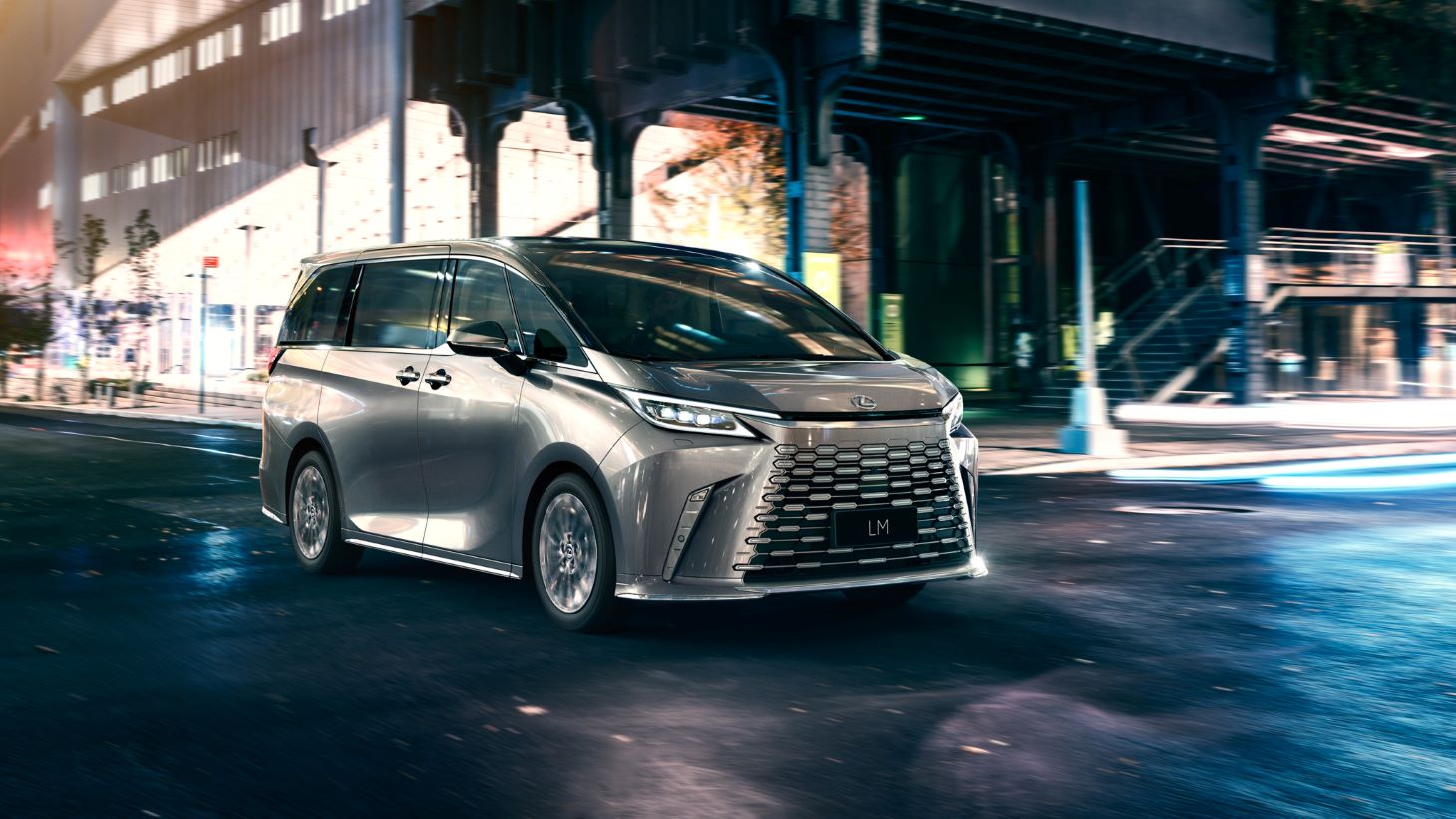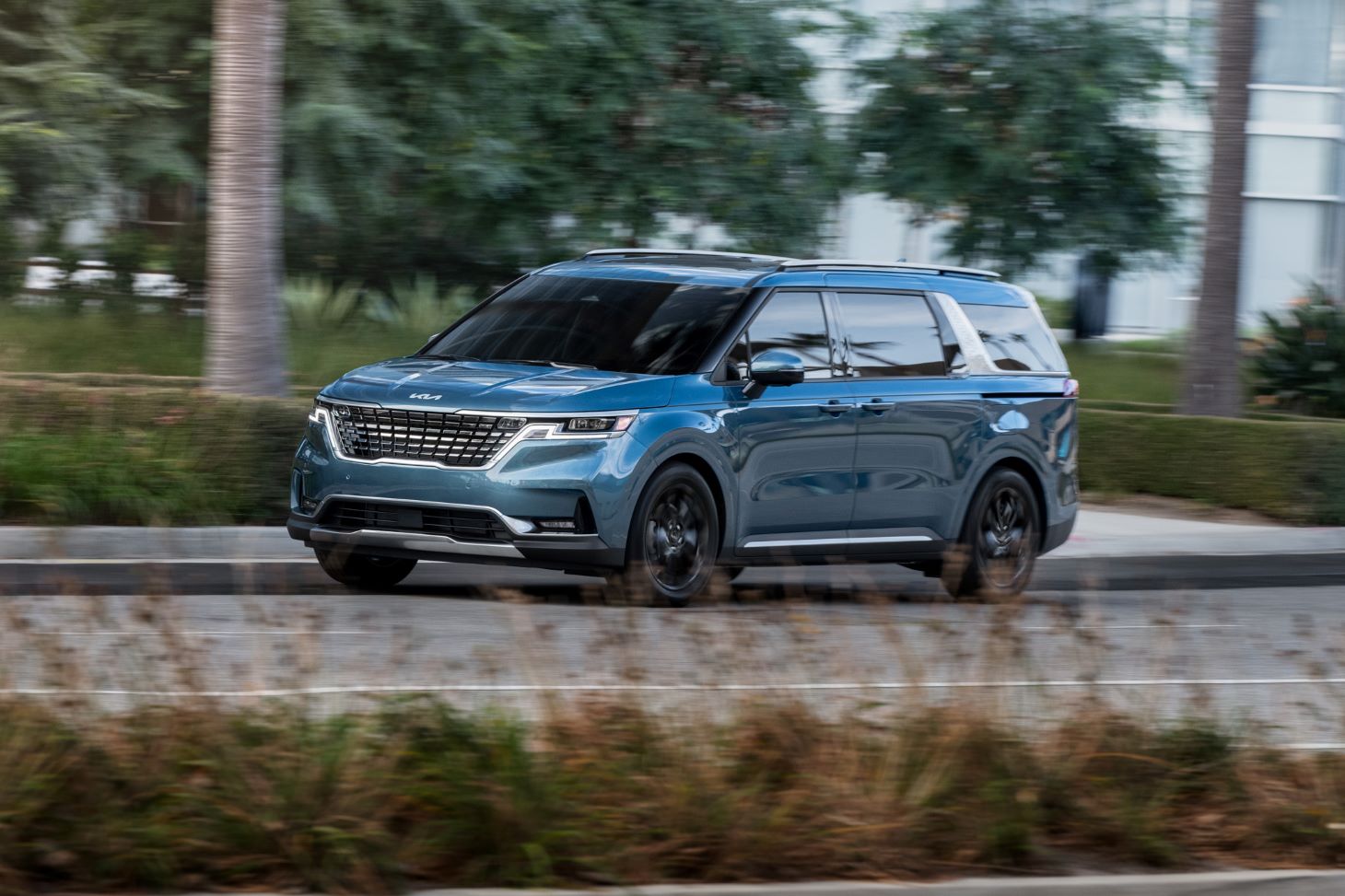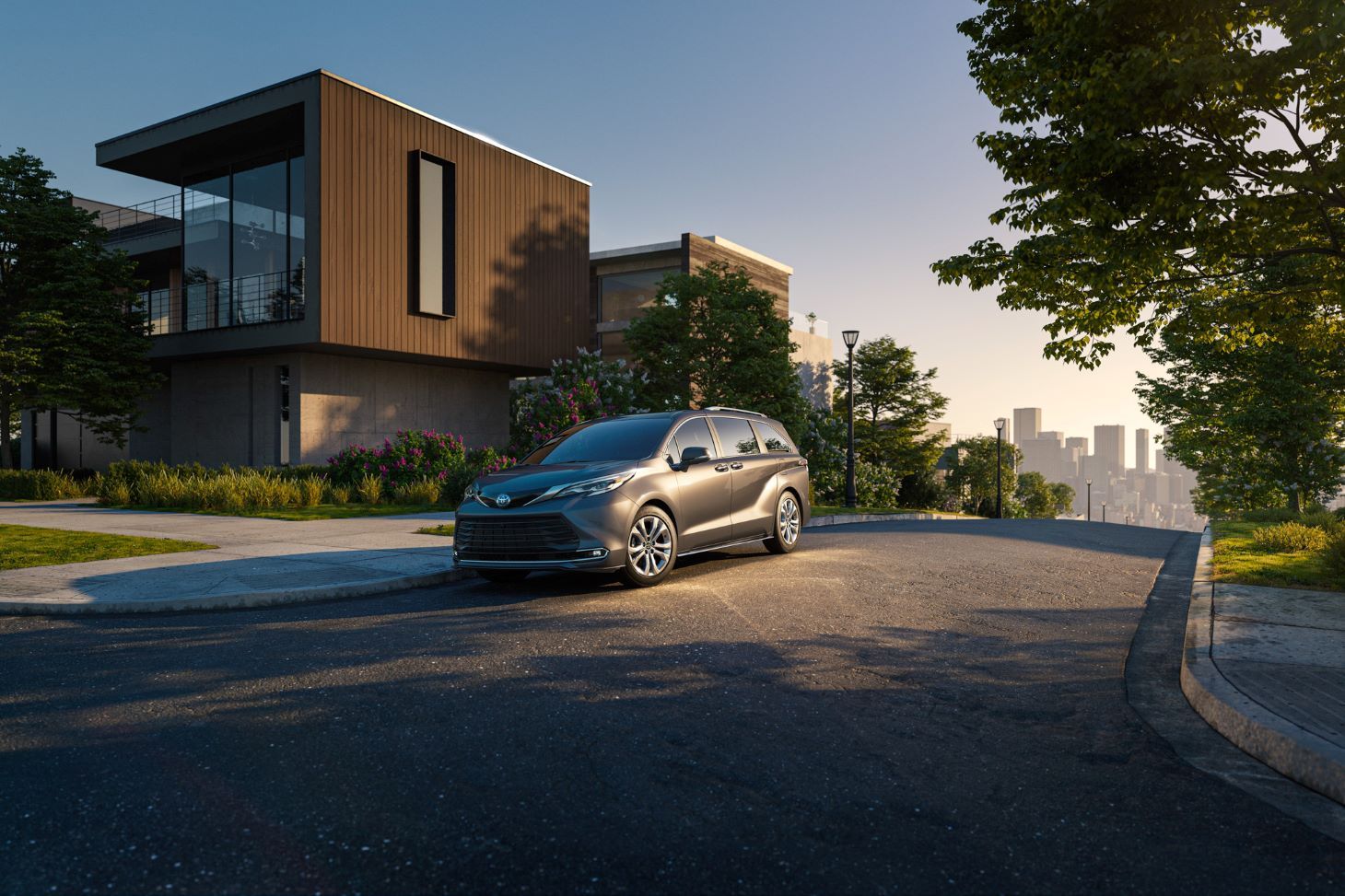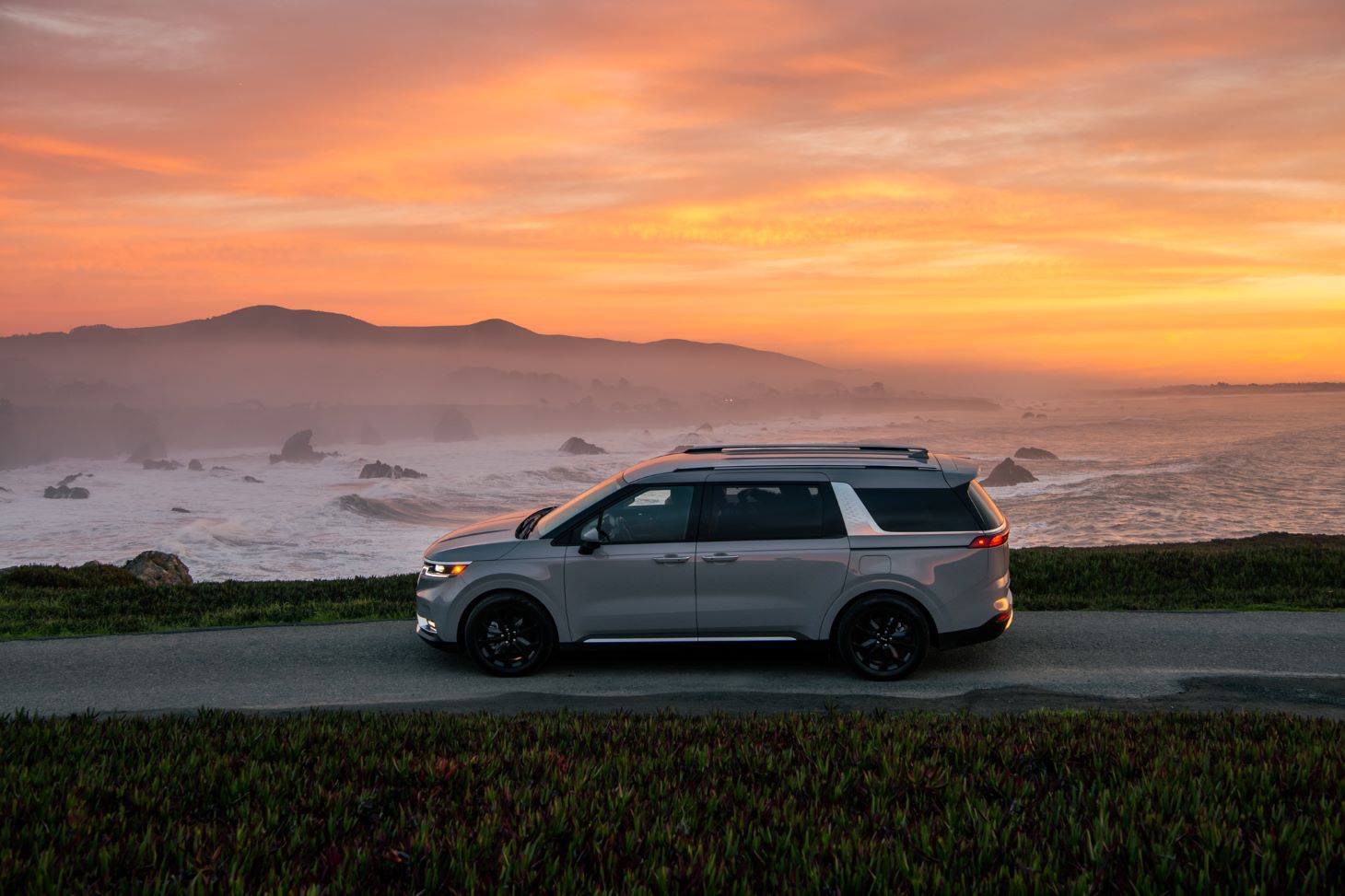At this year’s Met Gala, celebrities glittered like flocking birds of paradise, dolled up in improbable and—frankly—inconvenient fashions. But when next snapped on the streets of Los Angeles by the paparazzi, the haute couture feathers had moulted in favour of baggy jeans, voluminous tops, and stretchy gym wear. Showing off is a privilege, but true luxury is found in anonymous comfort.
Lexus knows this, as demonstrated across the Pacific where it launched its sumptuously appointed LM last year. The LM comes with all the accoutrements that wealth could desire: airline-style rear captain’s chairs with power ottomans, a 48-inch screen and rising partition, leather-lined interior, cavernous space, and ambient lighting. Also, sliding doors.
Yep, it’s a minivan. And it’s not alone.
The LM rides on Toyota’s TNGA-K platform, which it shares with the likes of the Grand Highlander crossover and, overseas, the Alphard minivan and the Toyota Century SUV. Nominally a crossover, the Century is Toyota’s flagship model in Japan, and in its earlier sedan form has long represented the highest level of craftsmanship and luxury you can buy from the company. This new Century, with minivan-style sliding doors, is aimed at the youth market. The Century sedan is stately; the minivan is the cool sibling.

Lexus LM.
Back on this side of the water, the minivan has an entirely different reputation, one forged in spilt Cheerios and errant Lego bricks. Pioneered by the likes of the Chrysler Magic Wagon, the minivan supplanted the family station wagon as pragmatic kid-schlepping transportation without a whiff of aspiration—fleece jogging pants on wheels, a surrender to the middle-aged realities of child-rearing, usually marked by some kind of stain. As Chief Wiggum of The Simpsons famously observed, “Nothing gets chocolate out, see?”
As family transportation, the minivan has now itself been firmly replaced by the crossover. RAV4s and Pilots now ferry youngsters hither and thither, not quite true SUVs and not quite practical people haulers but a blend of both. It’s a generational thing: you wouldn’t be caught dead in your mom’s jeans, and you probably have little desire to buckle into the driver’s seat of her old Dodge Caravan either. For more than a decade, minivan sales have slid, following the midsized family sedan into obscurity and eventual extinction. However, last year minivan sales were up.
What gives? Well, for one thing, familiarity breeds contempt, and with crossovers now the default choice, shoppers are looking for something a little different. For another, today’s minivan is far cry from the sticky box of crayons your parents might have driven.
Take the bestselling Chrysler Pacifica. Available with either a 287 horsepower V6 and optional all-wheel-drive or a plug-in hybrid V6 with 260 horsepower, the Pacifica is the lone machine standing in the Chrysler range. Where its ancestors were boxy and disposable, it’s genuinely upscale inside, and the fold-away middle row seats in the nonhybrid model can’t be beat for unexpected cargo hauling such as impromptu antique furniture purchases.

Kia Carnival.
Also a surprise is Kia’s Carnival, which is less box-like than you’d expect from a minivan and laid out inside like a private jet. Particularly noteworthy are the VIP lounge seats, which feature powered foot rests and full heating and ventilation. You’ll never get the kids back into coach once they’ve flown first class.
Aging but still the grande dame of the school run, the Honda Odyssey has taken over the role of the V6 Accord, driving far better than you’d expect of a family-oriented vehicle. The V6 shares its architecture with a number of sporting Acuras, and the suspension tuning belies the van’s size on a curving road. There’s even an optional PA system where Mom or Dad can live out their regional pilot dreams: “Welcome aboard.”
Not least, there’s the Toyota Sienna, riding on the same platform as the Lexus NX and Century SUV. It’s not a hustler, pitting a 245 horsepower 2.5-litre four-cylinder hybrid against more than 2,100 kilograms of curb weight. Nor does it try to hide its function-first profile, even sitting on 18-inch wheels in sportiest XSE trim.

Toyota Sienna.
But the fuel economy is outstanding at 6.7 litres per 100 kilometres in mixed use, the ride is comfortable and composed, and the driving experience is appealingly honest. You can haul more DIY supplies for weekend projects than most pickup trucks ever will, and as far as kids are concerned, it’s a rolling clubhouse.
The Sienna, effortless and unpretentious, is priced for less than what a luxury brand might charge for a compact crossover. And as for any sacrifice on styling, not caring one whit what anybody else thinks has always been the highest form of fashion.
Despite the modest uptick in sales, minivans are likely to remain niche, here or overseas. Like many vehicles, it’s a you-know-if-you-know thing, not unlike the secret nods of approval exchanged between two owners of Mercedes-AMG performance wagons. Not for the mainstream but no less appealing because of it.
And in the future, there’s every chance the minivan will endure, if not thrive. It’s already happening in China, with the unlikely Volvo EM90, which features a battery-electric powertrain with a range of over 700 kilometres. A rebadged version of the China-only Zeekr 009, the EM90 seats six in comfort, with fold-out tables and birchwood panels. A 21-speaker Bowers & Wilkins premium audio system bathes the interior in music, while active sound-cancellation removes unwanted noise. It is, again, the equivalent of a private aircraft for the road.
But minivan enjoyment need not be so fancy. No one looks twice as you glide through traffic, comfortable and soothed, lacking nothing. A celebrity might pay anything for such anonymity. No one looks twice when those sliding doors shut.
Read more Transportation stories.









